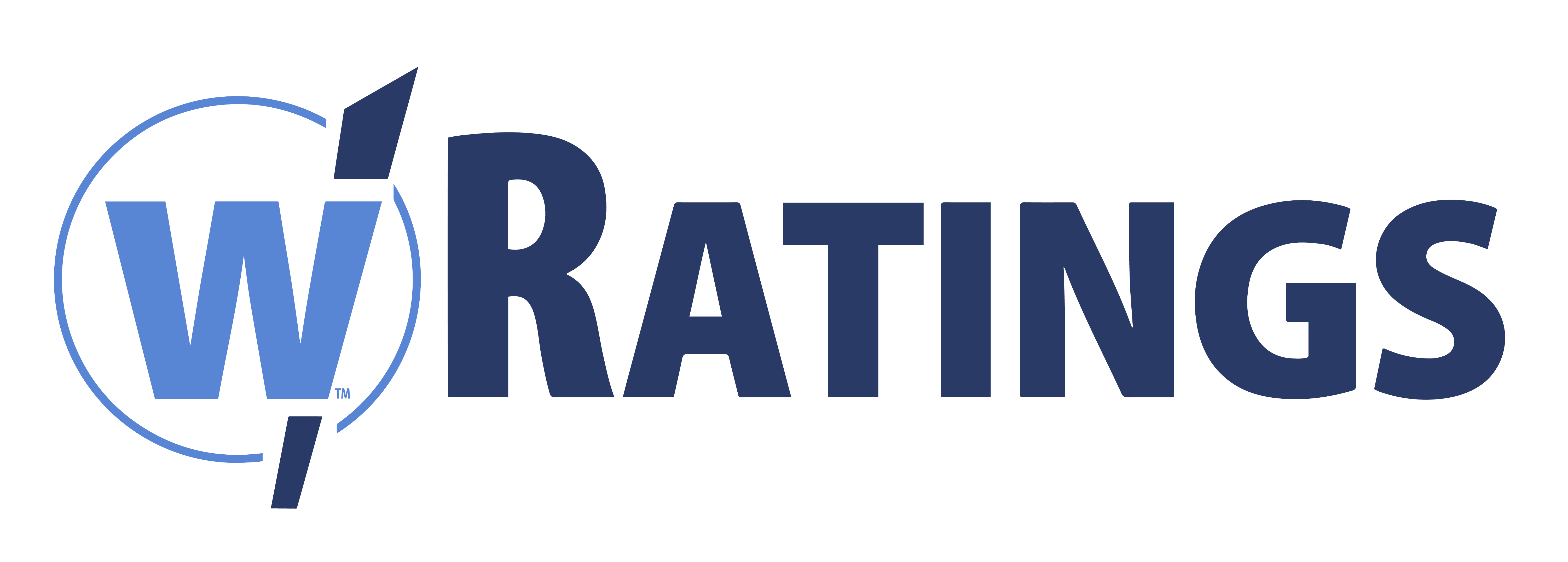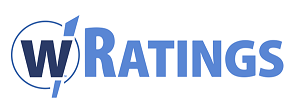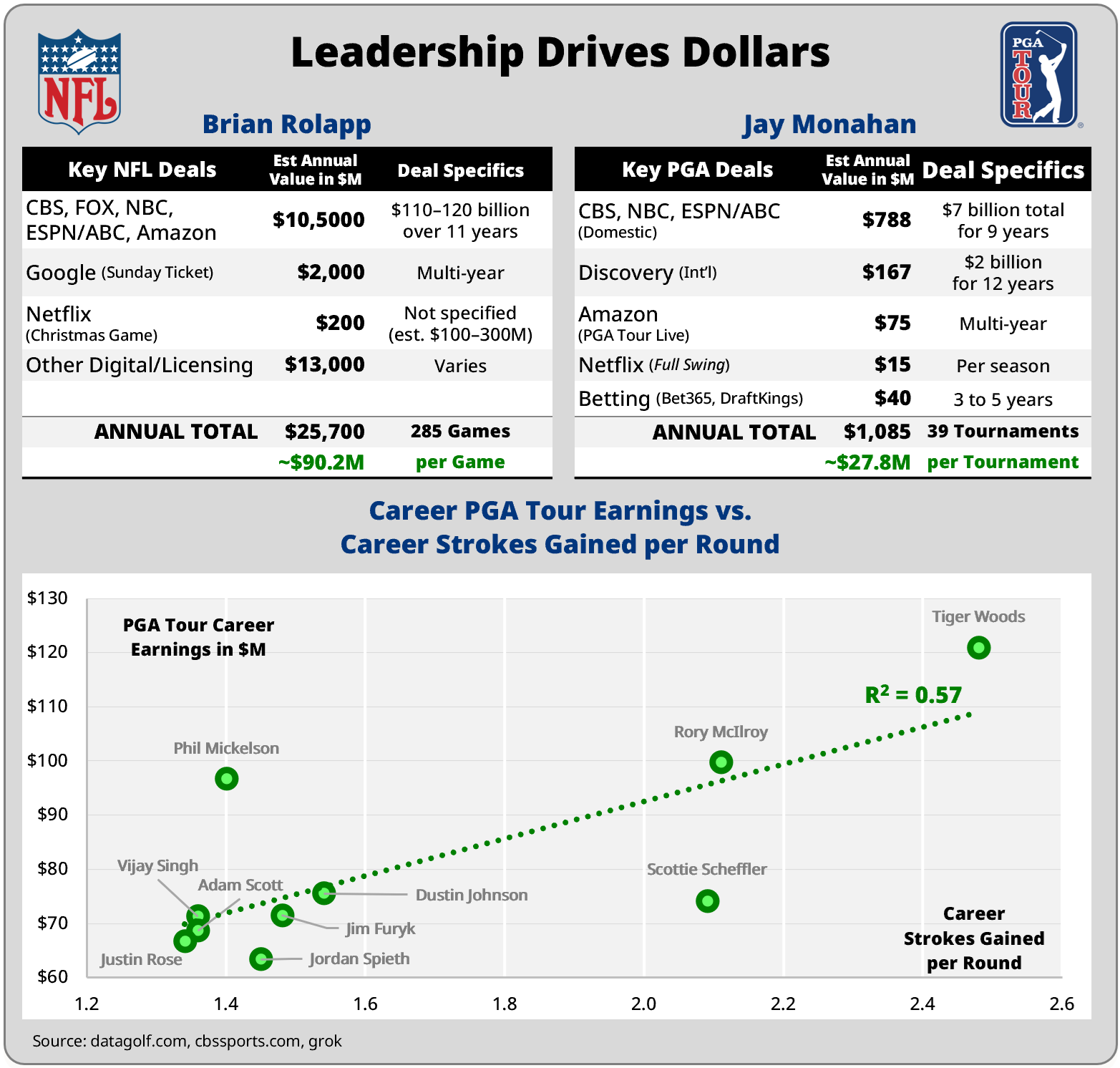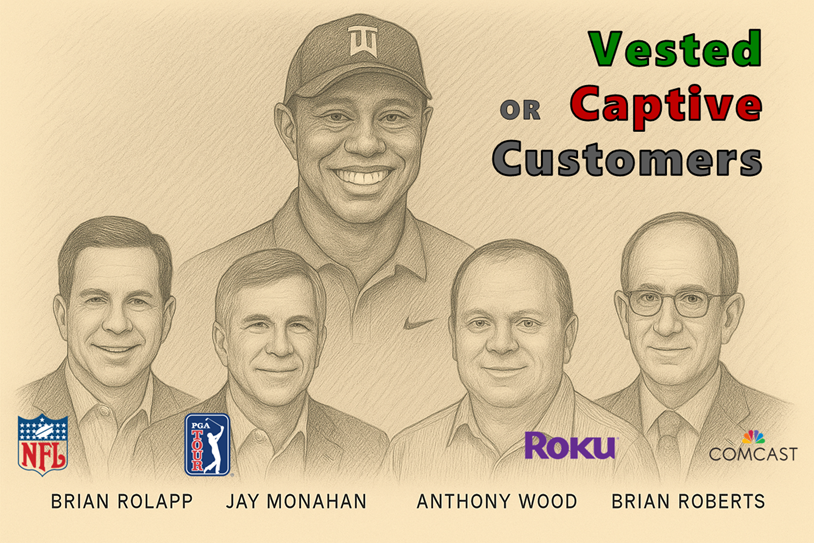
All trademarks are properties of their respective owners.
The PGA Tour got their Tiger Woods as CEO by persuading Brian Rolapp to leave the NFL as Chief Media and Business Officer. While Rolapp has little to no golf experience on the course or in the boardroom, he has what commissioner Jay Monahan does not have: A wildly successful revenue playbook.
Comparing the Rolapp/NFL deals to Monahan/PGA ones, the contrast is stark. Over the last few years, Rolapp has racked up ~$25.7 Billion in annual media deals. Monahan’s media deals add up to ~$1.1B annually for the PGA Tour. Of course, the NFL has more media events to sell – 285 games versus 39 PGA tournaments. Rolapp still has that “Tiger Woods” lead at $90.2M per event over Monahan’s $27.8M per event.
But a key difference exists between the NFL and PGA Tour — football players belong to a union whereas golfers are independent contractors. NFL players don’t have much choice where to play professional football, whereas professional golfers can play in any league or even any tournament.
In business, we call these captive versus vested customers. Think of how companies like Comcast held cable subscribers hostage for years, until Roku gave them freedom to cut the cord. Roku and Comcast employ entirely different strategies in order to win customers. As PGA Tour CEO, Rolapp will need to do the same.
Vested/Captive Customers: Golfers/NFL Players
How good is new PGA Tour CEO Rolapp at dealmaking? About 3.2X better than previous commissioner Jay Monahan. That’s Tiger Woods level performance when you consider how far ahead Tiger is over the rest of the field when it comes to PGA Tour Career earnings.
But you don’t get paid unless you earn it. Tiger’s career average for Strokes Gained (see The Masters blog for full SG description) is 2.48, well above both Rory McIlroy’s 2.11 and Scottie Scheffler’s 2.09. Moneyball, or more accurately “MoneyGolf,” works. Up your SG; Up your earnings.
Rolapp has a new challenge with professional golfers though, and he’s going to have to earn their participation as a vested (and voluntary) customer due to being independent contractors. They can make their own schedules and even their own leagues, as LIV has become a popular destination for many top golfers.
And even though his deals have been profitable for the NFL, fans are not always on board but still watch because they are captive customers (lack of options). Take Thursday Night Football (TNF). Fans, players, and coaches don’t like it because of mid-week travel schedules and insufficient player recovery times. But the NFL keeps it because it makes money.
As with a lot of captive audiences, the value gap for events like TNF is large as players and fans are dissatisfied. No doubt that Rolapp benefitted from not having to create emotional loyalty from his customers.
With the PGA Tour, Rolapp dealmaking will be much more difficult and much more complex. He will need to sway 100s of professional golfers individually and collectively to participate in any media deals. Over half ($13B) of the NFL deals Rolapp cut were for social media and content partnerships, and he has some innovation to work with at PGA. For example, the virtual TGL debuted this year, which seems like a natural fit to develop more media dollars. While no ownership stake, the PGA Tour is a partner with TGL.
His biggest challenge will likely be to reunite the LIV golfers with PGA. Maybe Rolapp can borrow some ideas from how Roku has built its vested customer following.
Vested/Captive Customers: Roku/Comcast
Customers of Apple, Starbucks, and Roku all have one thing in common: They make a choice to stay with them, even when multiple options exist to shift based on preference. Customers of Microsoft, Adobe, and Comcast also have one thing in common: They feel forced to stay due to lack of alternatives, high costs or loss of time if they defected.
The former customers are in constant pursuit of more value, which is why companies with those vested customers consistently reset the bar on expectations . . . and are the ones to uniquely meet those expectations.
Roku founder and CEO Anthony Wood understands this. Roku’s advertising segment represents ~65% of its revenue. Throw in subscriptions and licensing, and the segment grows to 86% overall. In the last week, Roku partnered with Amazon Ads to reach 40% more unique viewers without adding costs to the media buyer.
But wait, the deal brings a strong benefit to customers as well. A person will see the same ad almost 30% less now on Roku. This is a milestone deal for Roku, and gives media buyers access to over 80% of all US-connected TV households through Amazon Ads. Both companies are customer-driven and, even though they do compete with each other, they are also customers too as Roku devices are sold on Amazon.com and Prime Video is sold on Roku’s devices. New PGA Tour CEO Rolapp may need to look at how to partner with his competitors to generate more revenue.
Brian Roberts is CEO of Comcast and Xfinity, the largest internet service provider in the US. Due to regional monopolies or duopolies, certain US regions have limited broadband alternatives. They impose high termination fees and/or bundle their services (cable/internet) to hold customers captive. About 29 million broadband customers continue to subscribe due to lack of competition.
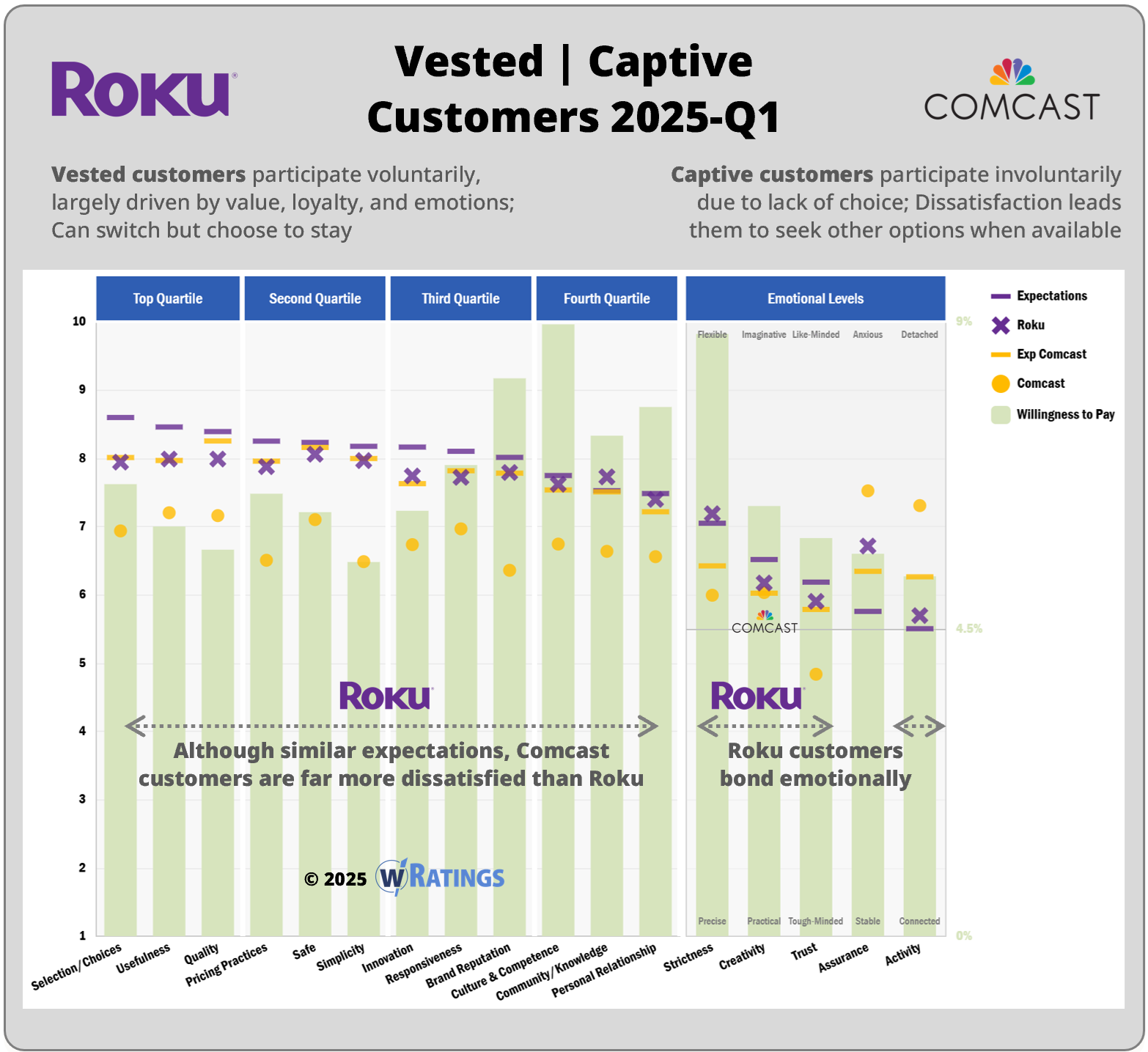
Even though Comcast customers have mostly similar expectations (but lower) as Roku customers, they are substantially less satisfied as of 2025-Q1 across all 12 functional needs. When it comes to building emotional bonds, Roku customers feel they have more flexibility, think more like them, and stay connected with them.
Of all 17 areas measured, Comcast customers see them better than Roku in just one area: Creativity. The Peacock streaming channel and recent 5-year price guarantee may be imaginative. But at the same time, those types of price and bundling offers extend customer captivity rather than converting them to loyal, vested customers.
Roku’s strategies are much different, something that other CEOs like Brian Rolapp can learn from. Vested customers at Roku value the seamless integration of streaming services, a highly tailored user experience, and access to free content on The Roku Channel. Customers stick with Roku because the interface is so intuitive, and they continually update their ecosystem (e.g. Amazon Ads) with new ways of delivering value.
Back in November 2024, Comcast announced their plan to spin off the Golf Channel, along with other NBCUniversal networks like CNBC, MSNBC, USA Network, E!, and SYFY. No one should be surprised if new PGA Tour CEO Rolapp snaps up the Golf Channel and finds new ways to build vested golf customers.
Create Vested Customers
Let the wRatings platform show you the analytics of whether your customers are vested or captive, and how to convert them into customers willing to pay and buy more from you.
If you’d like access to our Moneyball analytics and our benchmarking database, sign up to become a wRatings Insider here.
